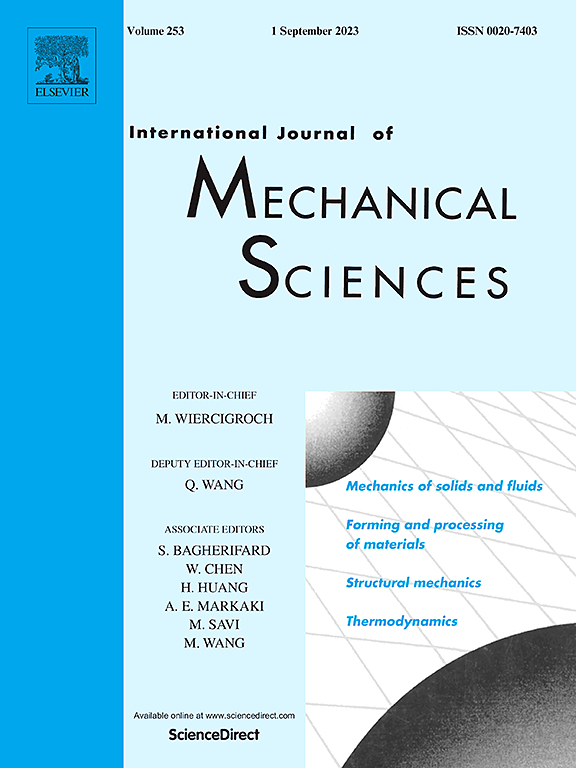Fiber bond-slip theoretical model for magnesium phosphate cementitious composites
IF 7.1
1区 工程技术
Q1 ENGINEERING, MECHANICAL
International Journal of Mechanical Sciences
Pub Date : 2025-01-31
DOI:10.1016/j.ijmecsci.2025.110030
引用次数: 0
Abstract
This study investigates basalt fiber interface degradation and developed the theoretical model incorporating fiber pull-out behavior of polymer-modified magnesium phosphate cement (PMPC) matrix. Fiber bundle pull-out tests were conducted first, followed by the establishment and validation of an interface constitutive model that accounted for bond-slip cracking between the fiber and matrix. Additionally, the compression behavior of basalt fiber-reinforced PMPC (BFPMPC) mortar was analyzed with fiber interface fracture considered. The results indicated that the strong adhesion of the PMPC paste resulted in high equivalent and average shear adhesion strength at the fiber interface. As the pull-out loading rate increased, the pull-out force rose correspondingly. However, the maximum pull-out force decreased with increase of inclination angles. The elastic modulus of interface between the fiber and PMPC matrix was determined to be 63.82 GPa. Experimental observations of fiber compressing the PMPC matrix revealed mode I crack characteristics. Compared with numerical simulation results, the test results aligned well with the experimental curves. This agreement validated the proposed fracture mechanics model for fiber-PMPC matrix bond-slip failure. Furthermore, the compression constitutive law of BFPMPC mortar strongly agreed with experimental findings, which considered bond-slip interactions and interface damage evolution.

求助全文
约1分钟内获得全文
求助全文
来源期刊

International Journal of Mechanical Sciences
工程技术-工程:机械
CiteScore
12.80
自引率
17.80%
发文量
769
审稿时长
19 days
期刊介绍:
The International Journal of Mechanical Sciences (IJMS) serves as a global platform for the publication and dissemination of original research that contributes to a deeper scientific understanding of the fundamental disciplines within mechanical, civil, and material engineering.
The primary focus of IJMS is to showcase innovative and ground-breaking work that utilizes analytical and computational modeling techniques, such as Finite Element Method (FEM), Boundary Element Method (BEM), and mesh-free methods, among others. These modeling methods are applied to diverse fields including rigid-body mechanics (e.g., dynamics, vibration, stability), structural mechanics, metal forming, advanced materials (e.g., metals, composites, cellular, smart) behavior and applications, impact mechanics, strain localization, and other nonlinear effects (e.g., large deflections, plasticity, fracture).
Additionally, IJMS covers the realms of fluid mechanics (both external and internal flows), tribology, thermodynamics, and materials processing. These subjects collectively form the core of the journal's content.
In summary, IJMS provides a prestigious platform for researchers to present their original contributions, shedding light on analytical and computational modeling methods in various areas of mechanical engineering, as well as exploring the behavior and application of advanced materials, fluid mechanics, thermodynamics, and materials processing.
 求助内容:
求助内容: 应助结果提醒方式:
应助结果提醒方式:


